Microplastics are small pieces of plastic less than 5 millimeters long. Some microplastics start out small, like industrial plastic pellets used to make plastic products, or microbeads added to exfoliating personal care products like cleansers and toothpaste [1]. Other microplastics result from large pieces of plastic breaking down. Tumbling around in water or on land, exposure to sunlight, and interactions with living things can break down plastic materials into smaller microplastics [2]. Small fragments of plastic water bottles, fibers from fleece clothing, frayed pieces of nylon rope—these can all be microplastics. They never go away, they just get smaller and smaller. Microplastics are made of materials called polymers, and these polymers commonly come from refined [oil and gas](https://publiclab.org/wiki/oil-and-gas). Especially prevalent as pollution in the environment are polyethylene, polypropylene, and polystyrene. **How can microplastics pollution affect our communities?** You might have already heard that microplastics are a problem. They’re polluting our oceans and our coasts, but they’re also in rivers and city canals, in [drinking water](https://www.natlawreview.com/article/regulating-microplastics-drinking-water-california-retains-its-vanguard-status), and [in our seafood](https://www.youtube.com/watch?v=r49fl59mFtU)—microplastics pollution is a local problem affecting environmental and public health. Microplastics have the potential to harm human health because they easily absorb toxic chemicals. If we drink water containing microplastics or eat seafood that’s ingested microplastics, we’re exposing ourselves to those chemicals, too [3]. Communities with close connections to water as a source of food have the potential to experience greater impacts from microplastics pollution. This page is a place to collect and organize resources on microplastics pollution and monitoring. Visit the [microplastics tag page](https://publiclab.org/tag/microplastics) to see the latest community posts about microplastics on Public Lab, and get updates on this topic by subscribing: Subscribe to microplastics Sources: [1] [NOAA, what are microplastics?](https://oceanservice.noaa.gov/facts/microplastics.html) [2] [Masura et al. 2015](https://marinedebris.noaa.gov/sites/default/files/publications-files/noaa_microplastics_methods_manual.pdf) [3] [Karbalaei et al. 2018](https://doi.org/10.1007/s11356-018-3508-7) Lead image from [@maxliboiron's](https://publiclab.org/profile/maxliboiron) [work](/questions/maxliboiron/07-19-2018/how-to-analyze-plastics-forensically) On this page you can: See community stories and projects on microplastics Join the conversation Ask a question, answer a question, or follow future questions on microplastics Post an issue brief that describes your local concern related to microplastics Research microplastics pollution Read research notes Do or add an activity Learn current and emerging methods to monitor microplastics Learn about regulations, policies, and advocacy related to microplastics Find further reading and resources on microplastics See what’s still unknown and next step challenges in microplastics monitoring ## Community stories and projects [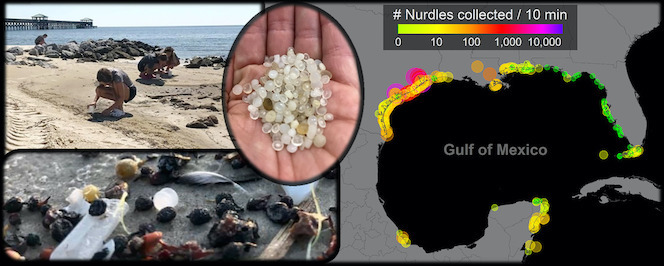](/i/40891?s=o) Image from Tunnell et al. 2020, [https://doi.org/10.1016/j.marpolbul.2019.110794](https://doi.org/10.1016/j.marpolbul.2019.110794), [CC BY 4.0](http://creativecommons.org/licenses/by/4.0/). ### Lavaca Bay residents win $50-million settlement with Formosa Plastics **What was the issue?** In 2009, Diane Wilson, an environmental activist and retired shrimper in Seadrift, Texas, noticed hundreds of small plastic pellets (nurdles) polluting the shores and waterways of Lavaca Bay on the Gulf Coast. The area is home to a generations-old fishing community, tourism industry, and a plastic pellet manufacturing plant run by Formosa Plastics. **How did they research the issue?** Diane and other local residents, including former Formosa plant workers and members of the San Antonio Bay Estuarine Waterkeeper, went out on foot and by kayak to collect plastic pellets by hand, visiting multiple sites, several times a week, over several years. They teamed up with an environmental scientist who wrote a [report](https://waterkeeper.org/wp-content/uploads/2018/08/Jeremy-Conkle-Expert-Report-w-Appendices-2018.07.09-1.pdf) documenting the pollution, outlining its potential harm on the ecosystem, and recommending that Formosa stop releasing pellets immediately and monitor their outfalls into the Bay. And, they worked with Texas RioGrande Legal Aid, who provided free legal services. Using data from [another citizen initiative to document plastic pellet pollution](https://oceanservice.noaa.gov/podcast/jan20/nurdle-patrol.html) along the Gulf Coast, Diane and the Lavaca Bay residents could show that the highest pellet counts occurred near the Formosa Plastics plant in Point Comfort. **What did they do with their findings?** Over the years, Diane appealed to state regulators, the EPA, and the US Fish & Wildlife Service. Despite a $13-million fine in 2009, Formosa continued to illegally dump plastic pellets into local waters. The residents eventually amassed over 2000 samples of plastic pellets and powder, storing them in large bins and cardboard boxes as evidence of illegal dumping. As Formosa continued to pollute the Bay and regulators failed to enforce compliance, in 2017, Diane and the San Antonio Bay Estuarine Waterkeepers sued Formosa in federal court for violating the Clean Water Act. The judge approved an historic $50-million settlement that will fund cleaning up, monitoring, and preventing further pollution. It will also fund community groups, like the [citizen science project Nurdle Patrol](https://news.utexas.edu/2019/12/03/the-nurdle-patrol-wages-war-on-plastic-pellets-with-boost-from-lawsuit-settlement/). Formosa also agreed to zero-discharge of plastic pellets going forward. **More on this story:** + Diane Wilson and other volunteers are still finding nurdles in the area: “[Activists Find Evidence of Formosa Plant in Texas Still Releasing Plastic Pollution Despite $50 Million Settlement](https://www.desmogblog.com/2020/01/18/diane-wilson-formosa-point-comfort-texas-plastic-pollution-settlement)” + “[Report shows plastic pollution a threat to Texas Gulf Coast](https://waterkeeper.org/news/report-shows-plastic-pollution-a-threat-to-texas-gulf-coast/)” + “[Environmentalists take petrochemical giant Formosa to court over plastics pollution](https://www.texastribune.org/2019/03/25/formosa-goes-to-federal-court-for-alleged-plastic-pollution/)” + “['David-and-Goliath Story' as Texas Environmental Activist Diane Wilson Wins $50 Million Judgement Against Plastics Giant Formosa](https://www.commondreams.org/news/2019/12/05/david-and-goliath-story-texas-environmental-activist-diane-wilson-wins-50-million)” ### A Solidified Oil Spill (S.O.S.) on the Fraser River Two volunteers from the Surfrider Foundation of Vancouver Island, BC, Canada, share their story of tracking down plastic pellet pollution and its source along the Fraser River in [this short documentary film](https://vimeo.com/363904334). **More on this story:** + [Solidified Oil Spill (S.O.S) campaign, Surfrider Foundation of Vancouver Island](https://vancouverisland.surfrider.org/solidified-oil-spill/) + “[Nurdle Men on Beach Patrol](https://www.focusonvictoria.ca/focus-magazine-march-april-2020/nurdle-men-on-beach-patrol-r2/)” ### Latest community stories **A “nurdle apocalypse” in the Mississippi River** + [Typology for the nurdles of the "Bianca" spill](https://publiclab.org/notes/eustatic/08-26-2020/typology-for-the-nurdles-of-the-bianca-spill), from [@eustatic](/profile/eustatic) + “[Pollution Scientist Calls Plastic Pellet Spill in the Mississippi River 'a Nurdle Apocalypse'](https://www.desmogblog.com/2020/08/28/new-orleans-louisiana-plastic-spill-mississippi-river-nurdle-apocalypse)” **The pandemic and plastic pollution** [British Columbia is funding coastal communities to clean up marine debris](https://news.gov.bc.ca/releases/2020ENV0045-001613?fbclid=IwAR38o37BYrMatNFyK1NaeIQl58PCR4zz3x6yMkKnsCl0zn7a9jFXShwG_ow) as their typical sources of income from ecotourism decline because of COVID-19. _Do you have a project or story to share? [Start a project page](/wiki/new?n=15164&title=Name%20your%20project%20here) or [write a blog post](/post?tags=blog-submission) and add the tag `microplastics`, or post links here!_ ## Join the conversation [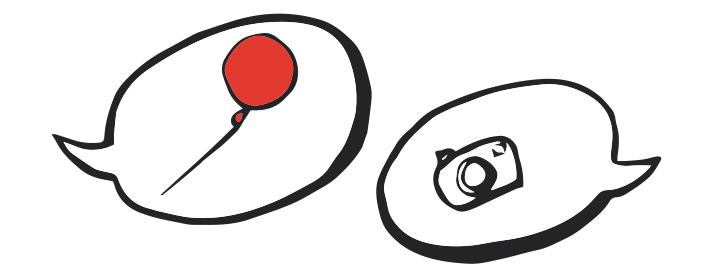](/i/40921?s=o) Image: [@mollydanielsson](https://publiclab.org/profile/mollydanielsson) ### Questions from the community + See if other community members are asking questions like yours + Ask a question so other community members can offer support + Sign up below to be notified when someone asks a microplastics question [questions:microplastics] ### Post an Issue Brief Share a local concern or issue related to microplastics pollution and get support from the Public Lab community by writing and posting an Issue Brief. Visit “[Write an Issue Brief](/wiki/issue-brief)” to find information on what an issue brief is, see examples, and learn how to write one. ## Research microplastics pollution [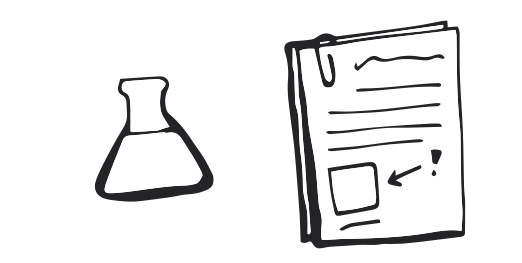](/i/40922?s=o) Image: [@mollydanielsson](https://publiclab.org/profile/mollydanielsson) Check out **research notes** and **activities** below to see how community members are investigating microplastics or to post your own ideas or stories. Further below, you’ll find more information on how you can get started in microplastics research. ### Research notes Posts written by Public Lab community members and tagged with `microplastics` will appear here. [Write a note about your own research or story here!](/post?tags=microplastics) [notes:microplastics] ### Activities Activities on Public Lab that have been tagged with `microplastics` will appear here [activities:microplastics] ### Overview of approaches and preparing for research [](/i/40923?s=o) Image: [@warren](https://publiclab.org/profile/warren) + The approach you use to research microplastics pollution will depend on your **location** and ease of **access** to the pollution, what **equipment** is readily available, and what you hope to learn or do with the **results** you find. + The **most accessible tools and methods described on this page will help you visually identify microplastics down to about 1 mm in size**. These might miss small but abundant plastics like microfibers and microbeads. + If you’re using plastic equipment to collect microplastics, be aware of possible contamination in your sample. Using brightly colored items can help identify possible contamination. Contamination can also come from nearby objects like fleece clothes and plastic bags used to hold equipment or samples. Cheaper and more readily available approaches: Collecting by hand or with an inexpensive filter or net and visually analyzing the sample to identify, count, and photograph microplastics. More expensive and precise approaches: Collecting by research-grade net or filter and analyzing with visual and chemical techniques to identify the make up of microplastics and their concentration in the environment. ### Methods for monitoring microplastics Below you’ll find information on how you can get started in microplastics monitoring in your community, with a focus on more readily available tools. The process is broken down into **sampling**, **processing**, **analyzing data**, and **what to do with your data**. Detailed posts on methods published on Public Lab and tagged with `microplastics` will appear here: [https://publiclab.org/methods#microplastics](https://publiclab.org/methods#microplastics). _Do you have a tool or method to share? [Start a method page](https://publiclab.org/wiki/new?n=14552&title=Your%20method%20name%20here) and add the tag `microplastics`!_ #### Collecting your sample Are you near a coastal beach? A freshwater stream? A city canal? There are ways to collect microplastics in all these places. **Common locations where you might sample microplastics:** + Beaches (sandy, rocky), shorelines, often accessed on foot + Water (ocean, rivers, streams, lakes), accessed by bridge or boat, or on foot for rivers **General sampling advice:** + Wear gloves! Be aware of nearby sewage outflow, murky water (avoid trawling in murky water) + If sampling from water, stay out of wakes from boats, from bridge poles, pilings, etc., they churn up water and mix contents + Make a record of all the plastic you’ve been using so you know where possible contamination can come from. E.g., plastic bags, nylon rope, etc. Avoid wearing fleece clothes while working with microplastics. + Make a note of recent environmental conditions that might affect how you sample and how much you’ll find: recent rains or tides, flow speed of water bodies, direction of winds in the area. ##### Survey a beach or shoreline and pick up by hand Nurdle survey Protocols for collecting and counting industrial plastic pellets or ‘nurdles’. Easy to do, needs minimal and inexpensive materials. Data produced: nurdle counts over a period of time at a particular location; photos. Image: hockadilly, CC BY SA Filtering microplastics from sand Various methods for filtering or sifting microplastics debris from sand, including standardized protocols, clean up strategies, and youth-oriented activities. Ease of the methods varies with the kind of data produced. Standardized protocols are a little more involved and require tools with more specifications. Data produced: ranges from counts to density (amount of debris per area). Image: @eustatic, CC BY SA ##### Collect from water using a surface trawl Surface trawls generally consist of a net or filter attached to a rigid frame, which is attached to a rope. The net captures items from the water. _Do you have to know where the microplastics are before trawling?_ Not necessarily! Biased trawl: if you sample through a specific location where you see visible trash pollution. Unbiased trawl: If you sample through a location to see what you’ll find. _Why might you use a trawl rather than just an aquarium net with a handle?_ The attached rope enables you to tow the net from behind a boat in open water, tie the net to a tree or stake if you’re sampling a river, or dangle the net from a bridge or broomstick if you’re sampling a canal or shoreline. BabyLegs DIY surface trawl designed by @maxliboiron of CLEAR that you can tow behind a boat or attach to a pole/broomstick and sample while on foot. Easy to build, ~$20 in materials that are easy to get. You can also buy a BabyLegs kit from the Public Lab store. Step-by-step how to build BabyLegs post, with links to videos of live builds in the comments. Step-by-step how to use BabyLegs post. Sampling time: at least 15 minutes, 30 minutes is ideal. Data produced: relative amounts of microplastics. See these ideas for calculating a proxy/very rough estimate for microplastics density. Tips! Check out the post Notes from a call on Babylegs (microplastics monitoring) for tips on design, deployment, processing and analyzing your sample, and troubleshooting. Image: Dave Howell for MEOPAR Bridge Trawl DIY surface trawl designed by Testing Our Waters that you can dangle from a bridge into a waterway, where the current can float debris into the net. Easy to build, inexpensive materials that are easy to get. Data produced: relative amounts of microplastics. Image: @TestOurWaters, CC BY SA Ice Cream Scoop Trawl Developed by the Dairy Queens from CLEAR, a trawl for collecting plastic debris (maybe larger microplastics) that you can tow while walking in water. Great for educators and kids! Made from an old ice cream container, kids can help with the build. Data produced: tests for the presence of plastic debris in water. Image: CLEAR Dairy Queens, CC BY Plastic Pirates sampling protocol for larger floating microplastics The Plastic Pirates campaign in the EU outlines a method in their project booklet (pg. 20) for sampling floating trash (including microplastics larger than 1 mm) from rivers. Aimed at young people aged 10-16 years! The Plastic Pirates website has support materials and guides for teachers and youth, and a sampling net you can borrow. Data produced: larger microplastic pieces per 1000 L. Image: Will Parson/Chesapeake Bay Program, CC BY NC Research grade surface trawls These trawls usually aren’t readily available to most people but are included here to show the breadth of tools out there. Manta Trawl ($3500) or LADI Trawl ($500 DIY trawl; link contains build instructions and design files) with a defined net size down to 0.335 mm. This is a standard size for publishing research in scientific journals. Boat is required to tow the trawl at the surface of open water. Microplastics are isolated, dried, and weighed. The amount of water that flowed through the net can be calculated. Data produced: concentration of microplastics (in weight or # items per surface area or volume). Image: Will Parson/Chesapeake Bay Program, CC BY NC ##### Collect from water using a container: “grab sample” To do a grab sample, you fill a non-plastic container with a known volume of surface water and filter the sample later to analyze it. You can use this method to sample a greater range of locations and smaller microplastics than surface trawls, with lower-cost equipment. Processing and analyzing the sample will likely need laboratory equipment, especially if you’re looking for microplastics smaller than 1 mm in size. Check out this paper for a description of the procedure: Barrows et al. 2017. Grab vs. neuston tow net: a microplastic sampling performance comparison and possible advances in the field. Analytical Methods, 9: 1446-1453. [PDF](http://27.254.44.224/~file/marine%20microplastics/20-22%20Sep%202017/Reference%20paper/Methodology%20Review_Recommendation/Grab%20vs.%20neuston%20tow%20net%20a%20MP%20sampling%20performance%20comparison%20%28Barrows%20et%20al%202016%29.pdf). #### Processing your sample If you used a net or filter to collect microplastics, next you’ll process your sample. This means removing the materials from your filter and drying them so you can analyze them further. See the note **[How to process microplastic samples from a trawl](/questions/maxliboiron/07-19-2018/how-to-process-microplastic-samples-from-a-trawl)** from [@maxliboiron](/profile/maxliboiron) for instructions using readily accessible materials. #### Analyzing your sample If you need to sort through your dried sample to identify, isolate, and count microplastics, read on for information on how you can analyze your sample. **[Step-by-step how to analyze your sample forensically](/notes/maxliboiron/07-19-2018/how-to-analyze-plastics-forensically)**: This post from [@maxliboiron](/profile/maxliboiron) includes a list of readily available materials, easy-to-follow instructions, tips on identifying microplastics, and lots of photos of different kinds of microplastics. More involved analysis methods that require lab equipment are described in “[Laboratory methods for the analysis of microplastics in the marine environment: recommendations for quantifying synthetic particles in waters and sediments](https://marinedebris.noaa.gov/sites/default/files/publications-files/noaa_microplastics_methods_manual.pdf),” from the US NOAA Marine Debris program. ##### Resources on materials and tools for analysis **Identification guides** Visual guides that can help you tell what’s plastic and what’s not, and what kinds of plastic you have. + [Spotter’s guide to plastic pollution](https://publiclab.org/system/images/photos/000/025/771/original/Spotter%E2%80%99s_Guide_to_Plastic_Pollution-_trawls-SM.pdf): easy-to-use 2-page guide from [CLEAR](https://civiclaboratory.nl/) + [Nurdle ID chart](https://www.nurdlehunt.org.uk/images/Leaflets/Nurdles-ID-chart_final.pdf): easy-to-use 1 page guide from the [Great Nurdle Hunt](https://www.nurdlehunt.org.uk/) + [Guide to Microplastic Identification](https://static1.squarespace.com/static/55b29de4e4b088f33db802c6/t/56faf38459827e51fccdfc2d/1459286952520/MERI_Guide+to+Microplastic+Identification.pdf): In-depth, 14-page guide from the Marine & Environmental Research Institute (now the [Shaw Institute](https://www.shawinstitute.org/)) **Dissecting scope** A low-magnification dissecting scope can be helpful for viewing and analyzing microplastics. [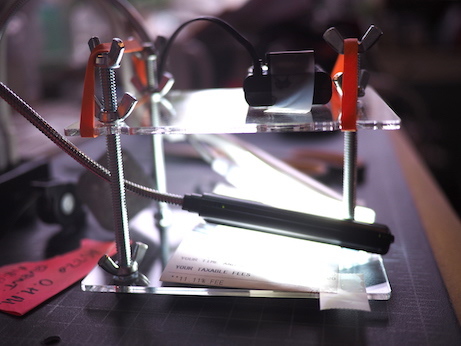](/i/40892?s=o) Image by [@warren](/profile/warren), originally in the post, “[Can the Community Microscope analyze ocean microplastics?](/questions/jiteovien/08-08-2018/can-the-community-microscope-analyze-ocean-microplastics)” [Build a low-magnification "dissection microscope" for microplastics](https://publiclab.org/notes/warren/10-16-2019/build-a-low-magnification-dissection-microscope-for-microplastics): this post by [@warren](/profile/warren) gives step-by-step instructions on how to adapt the [Community Microscope](/wiki/micro) (which you can [buy here](https://store.publiclab.org/collections/featured-kits/products/microscope?variant=8179759612011)) into a dissecting scope! The key is to have a light source and lens on the same side, pointing down toward your plastic sample sitting on top of a slide or small tray. _Have you used an adapted Community Microscope to look at microplastics? Please share a research note with your images!_ **Other assorted items** + **Graph / grid paper**: you might find a printed grid with regularly-spaced lines, e.g., 1 mm graph paper, useful if you want to know the size of pieces in your sample. + **Black light!** Many plastics will glow under a black light. This tip comes from David Boudinot and Daniel Brendle-Moczuk, plastic pellet researchers with the Surfrider Foundation of Vancouver Island. ##### What the data can look like + **Photos** of your processed microplastics sample + **Microscope images**/photos of your sample + A **count** of the total number of microplastics in your sample. Depending on your collection method, this may be a count per time or estimated area. + A description of the **size** and **type** of microplastics in your sample. Seeing lots of one kind of plastic in your sample can indicate a common source of plastics local to your area. ##### Analysis methods for peer-reviewed research Instruments that use [spectrometry](/wiki/spectrometry) (like Fourier Transform-Infrared and Raman spectroscopy) measure how infrared light interacts with and reflects off a material, producing a spectral image unique to that material. Comparing spectra from your sample material to spectra from known polymer materials can reveal the chemical makeup of microplastics in your sample. These instruments are often expensive, but check out the links below for open source, cheaper options! **Open source tools for spectrometry** + [RamanPi](https://hackaday.io/project/1279-ramanpi-raman-spectrometer): 3D-printable Raman spectrometer by [flatCat](https://hackaday.io/flatCat) + [OpenSpecy](https://wincowger.shinyapps.io/OpenSpecy/): online tool to analyze, share, process, and identify your Raman and IR spectra. By W. Cowger, A. Gray, H. Hapich, C. Rochman, J. Lynch, S. Primpke, K. Munno, H. De Frond, O. Herodotou. _Do you have open source tools of your own? Post them here!_ #### What can you do with your data? You’ve collected microplastics, processed and analyzed them, and now you have data! What can you do with it? **Reporting nurdle / plastic pellet counts** + Nurdle Patrol has a [reporting form](https://nurdlepatrol.org/Forms/DataEntry/) where you can submit your data and see your count appear on [their map](https://nurdlepatrol.org/Forms/Map/). Check out this post for more information. + The Great Nurdle Hunt also has a place to [submit data](https://www.nurdlehunt.org.uk/take-part/submit-your-finds.html) and see your count on [a map](https://www.nurdlehunt.org.uk/nurdle-finds.html). **Reporting all marine debris** + US [NOAA Marine Debris Tracker](http://marinedebris.engr.uga.edu/) is an app you can use to submit data on all kinds of marine debris. Microplastics data are number per unit area. _Do you know about other databases for reporting microplastic pollution, or are you interested in creating an open database? See the next step challenges below, or share your ideas in a [research note](/post?tags=microplastics)!_ ### Emerging methods and technologies Where is microplastics monitoring going next? If you’re interested in developing community tools for microplastics research, this section might offer some ideas on what work is happening. **Techniques for quickly analyzing large amounts of microplastics** Known as “high-throughput techniques.” Technical labs will carry out the techniques, but eventually, individuals and communities may be able to collect a microplastics sample and then send it to the lab for affordable analysis. **More standards on plastic pollution research methods and reporting** Microplastics research is a quickly-growing field! And there are many ways to collect, prepare, and analyze samples. Having common protocols for monitoring and reporting on microplastics will help make it easier for everyone to share and compare data. + A group of 23 microplastics researchers co-authored these guidelines on what should be reported in microplastics research to enable reproducible and comparable studies: Cowger, W. et al. 2020. **[Reporting Guidelines to Increase the Reproducibility and Comparability of Research on Microplastics](https://journals.sagepub.com/doi/10.1177/0003702820930292)**. Applied Spectroscopy. ## Regulations, policy, and advocacy ### Federal regulations What regulations exist, what agencies are in charge, and how does enforcement work or not work? + **US Environmental Protection Agency (EPA)**: Does not regulate microplastics specifically, but more broadly regulates marine debris through their [Marine Debris Program](https://marinedebris.noaa.gov/). Coordinates [regional projects](https://marinedebris.noaa.gov/your-region) across the country. + **US Coast Guard**: normally responds to pollution and spills of things categorized as “hazardous” in US navigable waters. Industrial plastic pellets (nurdles), which often do end up in the water, are NOT categorized as a hazardous material. + **US Fish & Wildlife Service**: responds to pollution and hazardous spills on public lands through its [Environmental Contaminants program](https://www.fws.gov/pacific/ecoservices/envicon/index.html). + **[Microbead-Free Waters Act of 2015](https://www.fda.gov/cosmetics/cosmetics-laws-regulations/microbead-free-waters-act-faqs)**: Congress passed this law banning “the manufacturing, packaging, and distribution of rinse-off cosmetics containing plastic microbeads.” ### International regulations and policy + **[Plastics Policy Inventory](https://nicholasinstitute.duke.edu/plastics-policy-inventory)**: Developed by Duke University and as of 2020 contains 322 original policy documents. This is a searchable database consisting of public policy documents targeting plastic pollution in several languages, beginning January 1, 2000. Each policy document can be downloaded and includes metadata on the source, language, year enacted, location, and jurisdictional level. The intent is to address plastic pollution by subnational, national, and international level governments, and is growing based on stakeholder input and continued research. **A success story from Nurdle Patrol!** Quoting Jace Tunnell of Nurdle Patrol and his collaborators in Texas: >"Nurdle Patrol data has resulted in action from some but not all of the federal, state, and local agencies. Examples of responsive agencies include The Texas Water Development Board, which is examining the possibility of using its hindcasting models to determine where the nurdles might have originated. TPWD [Texas Parks & Wildlife Department] has expressed interest in developing methodology to calculate how many nurdles are present per mile when a spill occurs. TCEQ [Texas Commission on Environmental Quality] is discussing their role in stormwater permitting for the manufacturing facilities, a possible source for nurdles based on evidence of high concentrations in manufacturer facilities near Galveston." (Tunnell et al. 2020, [https://doi.org/10.1016/j.marpolbul.2019.110794](https://doi.org/10.1016/j.marpolbul.2019.110794), [CC BY 4.0](http://creativecommons.org/licenses/by/4.0/)) ### What’s happening in microplastics regulation **California leads the way in regulating microplastics in drinking water** + [California has become the first state to define microplastics in drinking water](https://www.politico.com/states/california/story/2020/06/16/california-becomes-first-state-to-define-microplastics-in-water-1293744). + The State Water Resources Control Board will propose a standard testing method by July 2021, and then will require water suppliers to test for microplastics in their water and publicly report their data for four years. + If you want to read the bill, you can check it out here: [SB-1422 California Safe Drinking Water Act: microplastics](https://leginfo.legislature.ca.gov/faces/billTextClient.xhtml?bill_id=201720180SB1422). ### What advocacy can communities do? _Do you have ideas on what advocacy communities can do with microplastics data they gather? Or a story to share on how you’ve dealt with this issue? Post a research note and it’ll appear in the [Research Notes ](/wiki/microplastics#Research+notes)grid above!_ ## Further reading and resources **Additional resources** + Learn “[10 Facts You Need to Know about Microplastics](https://youtu.be/UnrjR2ZWePQ)” from environmental engineer and microplastics researcher, [Imari Walker Karega](https://www.youtube.com/channel/UCoiqwAaGW6-xANs3XOCO_Pg). + Also from Imari! “[Easy and Affordable Ways to Reduce Microplastic Contamination](https://youtu.be/fhx3BLhvlzU)” + 5Gyres [San Francisco Bay microplastics project](https://www.5gyres.org/sfbay-microplastics), including policy recommendations. + [World Health Organization info sheet on microplastics in drinking water](https://www.who.int/water_sanitation_health/water-quality/guidelines/microplastics-in-dw-information-sheet/en/#:~:text=How%20do%20microplastics%20get%20into,plastic%20waste%20and%20atmospheric%20deposition.) **Further reading** + Tunnell J.W., Dunning K.H., Scheef L.P., and Swanson K.M. 2020. Measuring plastic pellet (nurdle) abundance on shorelines throughout the Gulf of Mexico using citizen scientists: Establishing a platform for policy-relevant research. Marine Pollution Bulletin, 151:110794. [LINK](https://doi.org/10.1016/j.marpolbul.2019.110794). + Masura J., Baker J., Foster G., and Arthur C. 2015. Laboratory methods for the analysis of microplastics in the marine environment: recommendations for quantifying synthetic particles in waters and sediments. NOAA Technical Memorandum NOS-OR&R-48. [PDF](https://marinedebris.noaa.gov/sites/default/files/publications-files/noaa_microplastics_methods_manual.pdf). + Hidalgo-Ruz V., Gutow L., Thompson R.C., and Thiel M. 2012. Microplastics in the Marine Environment: A Review of the Methods Used for Identification and Quantification. Environmental Science & Technology, 46 (6), 3060-3075. [LINK](https://pubs.acs.org/doi/10.1021/es2031505). + Karbalaei S., Hanachi P., Walker T.R., and Cole M. 2018. Occurrence, sources, human health impacts and mitigation of microplastic pollution. Environ Science & Pollution Researc, 25: 36046–36063. [LINK](https://doi.org/10.1007/s11356-018-3508-7). + Guidelines for the Monitoring and Assessment of Plastic Litter in the Ocean: a comprehensive guide covering definitions, monitoring program design, and sampling and analysis methods for all sizes of plastic pollution. From UN-sponsored Joint Group of Experts on the Scientific Aspects of Marine Environmental Protection (GESAMP). [LINK](http://www.gesamp.org/publications/guidelines-for-the-monitoring-and-assessment-of-plastic-litter-in-the-ocean). ## Next step challenges What are some areas where microplastics monitoring and tool development could improve or go next? What questions remain? **A place for open community data?** + Would people find it helpful to have an open database where anyone can upload, view, and use various data on microplastics? Including counts, density measurements, and photos and microscope images? + With many protocols and limited standardization across the microplastics research field making data comparisons challenging, what groups working to share data and make them more widely available? **Standardized methods for everyone** + The US EPA has drafted “Escaped Trash Assessment Protocols” under their [Trash Free Waters program](https://www.epa.gov/trash-free-waters). These are intended to be standardized methods for collecting, categorizing, and reporting trash (including plastics), that can be done anywhere. Are these methods really universal? Can standardized data be more effectively used in regulation or enforcement, or to inform policy? **Microplastics monitoring in air and soil** + What questions, methods, and study designs do we have around microplastics in air and soil? [We know they’re there](https://www.greenbiz.com/article/farms-show-irreversible-contamination-soil). We’ve only scratched the surface with water and shoreline survey methods above. _Do you have anything to share about these challenges? Ideas on how to approach them? Or want to discuss other challenges not included here? Please [post a research note](https://publiclab.org/post?tags=microplastics) and link it here!_ [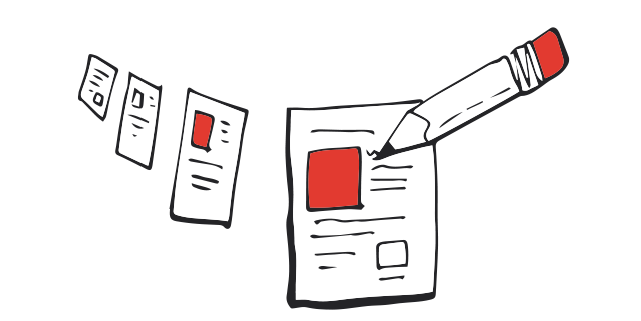](/i/40924?s=o) Image: [@mollydanielsson](https://publiclab.org/profile/mollydanielsson) ...